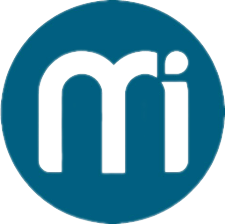The Future of Higher Education IT Asset Management: Optimizing Technology for Student Success
Technology is central to modern college life. Whether it's accessing virtual labs, conducting research, attending hybrid classes, or collaborating on group projects, students and faculty rely on campus technology daily. With this increased dependency comes the challenge of managing it all efficiently. That’s where higher education IT asset management (ITAM) becomes vital.
As digital transformation accelerates across campuses, institutions must adopt smarter strategies to manage their tech resources—ensuring they’re accessible, cost-effective, and impactful.
What Makes Higher Education ITAM Unique?
Unlike corporations, universities face dynamic and complex environments:
· Large, distributed campuses with multiple departments
· High turnover in users every semester
· Specialized hardware and software for research and teaching
· Regulatory pressures (e.g., FERPA, GLBA, accessibility compliance)
· Limited budgets with high expectations for innovation
Traditional IT management tools often fall short in such environments. Higher education needs solutions tailored to its specific needs—and that’s where platforms like LabStats shine.
LabStats: A Smarter Approach to Higher Ed ITAM
LabStats provides colleges and universities with deep visibility into technology usage. More than just an inventory tool, it empowers IT departments to make informed decisions based on actual behavior and demand.
How LabStats Supports Higher Education ITAM:
1. Detailed Usage Reports
See exactly which devices and applications are used, when, and by whom. Identify peak times, most-used labs, and software demand trends.
2. License Optimization
Avoid wasting funds on unused software. LabStats helps determine which licenses can be reduced or reallocated.
3. Remote Access Insights
Understand how students interact with campus tech from off-site locations, ensuring equitable access in hybrid or online programs.
4. Custom Dashboards and Alerts
Get real-time visibility into equipment status and usage patterns for better IT support and forecasting.
5. Strategic Resource Planning
Use data to justify technology investments, plan lab layouts, and forecast future needs.
Key Elements of a Strong ITAM Strategy in Higher Ed
1. Inventory Management
Track every piece of hardware and software across all departments—complete with location, owner, and lifecycle data.
2. Lifecycle Planning
Forecast and plan replacements for aging equipment before it fails or underperforms.
3. Budget Forecasting
Use past usage data to create accurate technology budgets and avoid wasteful spending.
4. Accessibility Monitoring
Ensure labs and digital resources meet student accessibility needs and are available when and where students need them.
5. Departmental Collaboration
Bring together stakeholders from IT, academics, and administration to align technology goals with institutional priorities.
The ROI of Higher Ed IT Asset Management
Adopting an effective ITAM system isn’t just about saving money—though the savings are real. It’s also about enhancing learning outcomes by ensuring the right tools are in the right hands at the right time.
Benefits include:
· Reduced costs from unused or misallocated resources
· Faster tech support by knowing where and how assets are being used
· Increased equity by identifying underserved students or departments
· Stronger strategic planning backed by real-time data
LabStats users consistently report better decision-making, smoother IT operations, and higher satisfaction from faculty and students.
Future Trends in Higher Education ITAM
1. Cloud-Based Asset Management
As campuses adopt hybrid infrastructure, cloud-based tracking will become essential for off-campus resources.
2. AI and Predictive Analytics
Smart ITAM systems will begin forecasting failures or usage spikes based on historical data.
3. Sustainability and E-Waste Reduction
ITAM tools will play a key role in minimizing e-waste by extending device lifecycles and ensuring optimal use.
Final Thoughts
Higher education IT asset management is evolving. It’s no longer just about keeping track of hardware—it’s about creating a responsive, equitable, and data-informed tech environment that supports learning and innovation.
By leveraging a solution like LabStats, institutions can move beyond guesswork and into strategic, scalable IT planning. Whether you're running a community college or a major university, smart asset management is your path to a more efficient and future-ready campus.
- Art
- Causes
- Crafts
- Dance
- Drinks
- Film
- Fitness
- Food
- Games
- Gardening
- Health
- Home
- Literature
- Music
- Networking
- Other
- Party
- Religion
- Shopping
- Sports
- Theater
- Wellness


